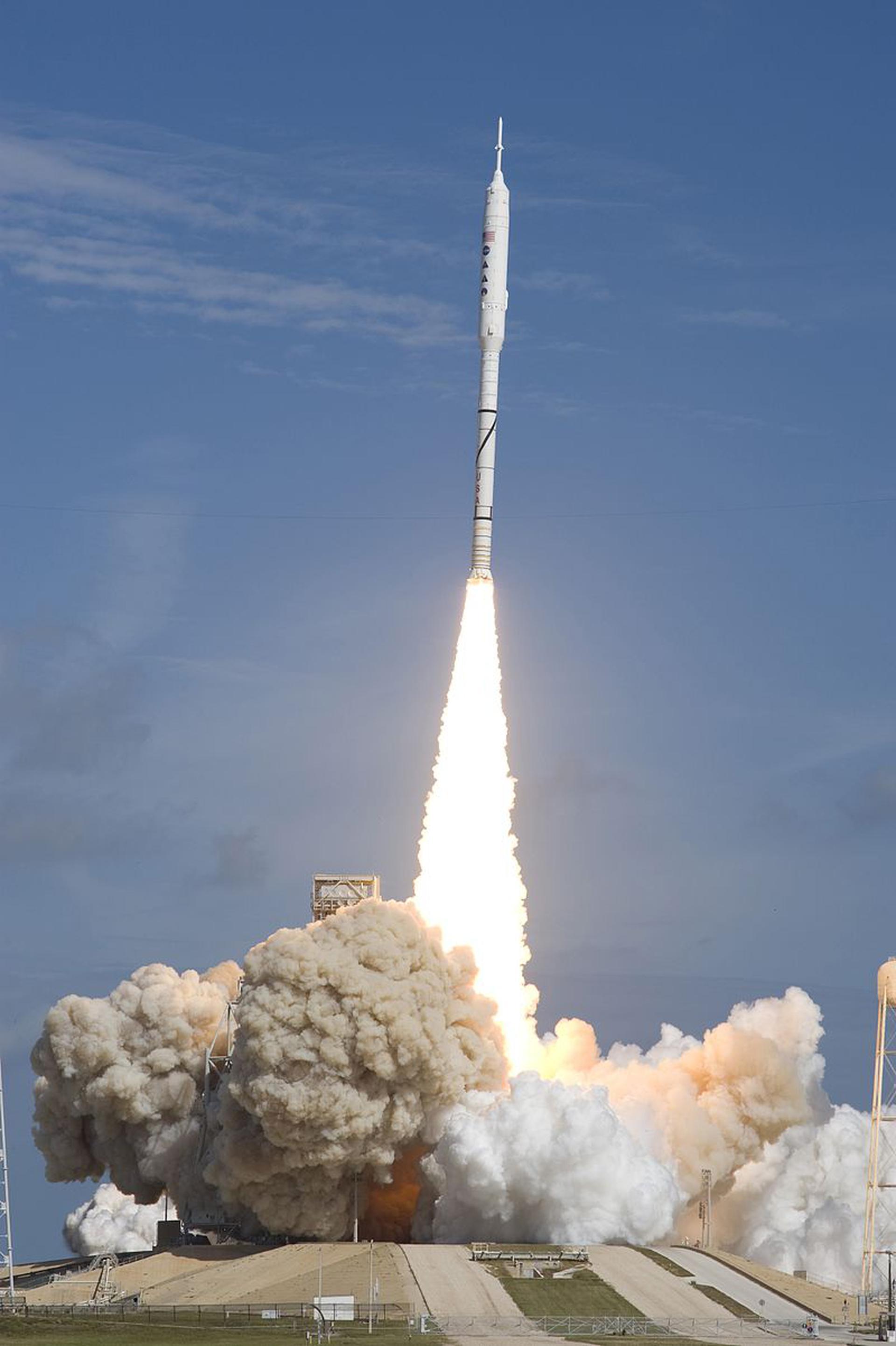
Ares I-X
In-activeNational Aeronautics and Space Administration (NASA)
Oct. 28, 2009
Description
Ares I was the crew launch vehicle that was being developed by NASA as part of the Constellation program. Ares I-X was a design concept demonstrator, that had a dummy second stage and a partially functional first stage.
Specifications
-
Stages
1 -
Length
99.7 m -
Diameter
3.71 m -
Fairing Diameter
― -
Launch Mass
816.0 T -
Thrust
12000.0 kN
Family
-
Name
Ares I-X -
Family
― -
Variant
I-X -
Alias
― -
Full Name
Ares I-X
Payload Capacity
-
Launch Cost
― -
Low Earth Orbit
― -
Geostationary Transfer
Orbit
― -
Direct Geostationary
― -
Sun-Synchronous Capacity
―
National Aeronautics and Space Administration
Government
Administrator: Jared Isaacman
NASA 1958The National Aeronautics and Space Administration is an independent agency of the executive branch of the United States federal government responsible for the civilian space program, as well as aeronautics and aerospace research. NASA have many launch facilities but most are inactive. The most commonly used pad will be LC-39B at Kennedy Space Center in Florida.
Ares I | Ares I-X
National Aeronautics and Space Administration | United States of AmericaKennedy Space Center, FL, USA
Sept. 28, 2009, 3:30 p.m.
Status: Launch Successful
Mission:
The Ares I-X vehicle used in the test flight was similar in shape, mass, and size to the planned configuration of later Ares I vehicles, but had largely dissimilar internal hardware consisting of only one powered stage. Ares I vehicles were intended to launch Orion crew exploration vehicles. Along with the Ares V launch system and the Altair lunar lander, Ares I and Orion were part of NASA's Constellation Program, which was developing the spacecraft for U.S. human spaceflight after the Space Shuttle fleet was retired.
SuborbitalAriane 62
Galileo L14 (FOC FM33 & FM34)
Ariane Launch Area 4 - Guiana Space Centre, French GuianaPayload consists of two satellites for Europe's Galileo navigation system.
Atlas V 551
Amazon Leo (LA-04)
Space Launch Complex 41 - Cape Canaveral SFS, FL, USAAmazon Leo, formerly known as Project Kuiper, is a mega constellation of satellites in Low Earth Orbit that will offer broadband internet access, thi…
Long March 4B
Ziyuan-3-04
Launch Complex 9 - Taiyuan Satellite Launch Center, People's Republic of ChinaThe ZY-3 (Ziyuan-3, 'Resource-3') series represents China's first high-resolution, stereoscopic mapping satellites for civilian use. The second sa…
Falcon 9
Starlink Group 6-82
Space Launch Complex 40 - Cape Canaveral SFS, FL, USAA batch of 29 satellites for the Starlink mega-constellation - SpaceX's project for space-based Internet communication system.
Falcon 9
Starlink Group 15-12
Space Launch Complex 4E - Vandenberg SFB, CA, USAA batch of 27 satellites for the Starlink mega-constellation - SpaceX's project for space-based Internet communication system.

